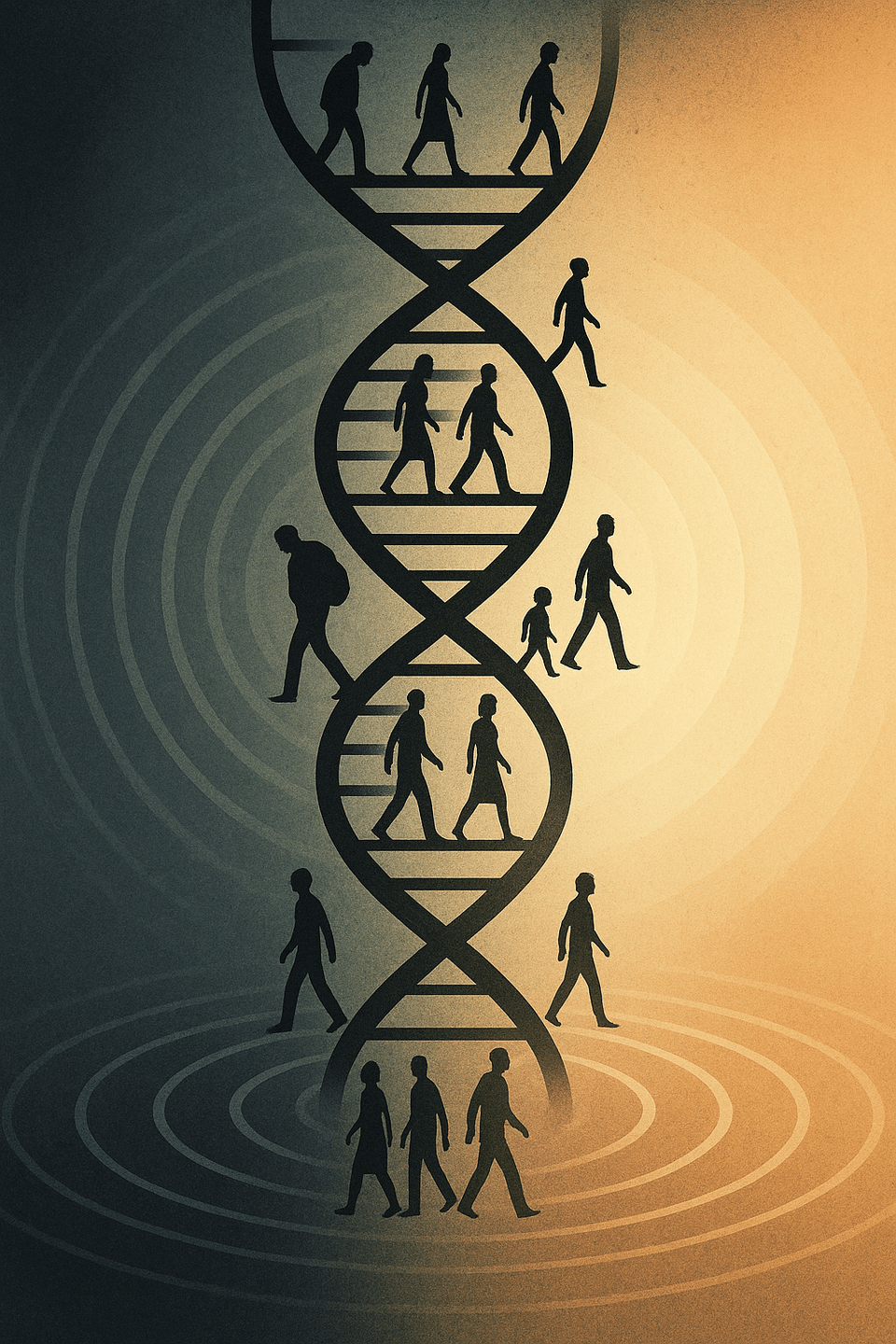
Written in Our Code: Aging, DNA, and the Quiet Countdown
We often think of aging as something that happens at the surface. Wrinkles, grey hair, tired muscles, the slow dimming of the senses. But these are only the outermost ripples of a far deeper current. The truth is that aging is not something that merely happens to us—it is something we are carrying within us from the beginning.
From the first breath, the countdown has already begun: encoded in our DNA, marked by the shortening of telomeres, written in the fragile choreography of proteins that hold us together. Mortality is not an intruder that arrives at the end; it is a script inscribed into every cell from the start.
And yet—that inscription is not the whole story. Whilst death is the inevitability, meaning is the response. The finitude of our biology is what presses us to ask not just how long we live, but how well. Not just what time takes from us, but what we choose to place within the time we are given.
Inside each of our cells, at the ends of our chromosomes, lie the telomeres: protective caps that keep our DNA intact. They are like the knots at the ends of a rope, stopping the strands from unravelling. Each time a cell divides, the knot grows a little smaller. With every replication, the rope shortens, until eventually there is no protection left. Then, the code itself begins to fray.
For a time, our DNA is buffered by redundancy, by layers of sequence that can be sacrificed without consequence. But this redundancy is finite. Slowly, inevitably, the damage creeps into the essential passages of our genetic script—the sections that tell the cell how to build proteins, the very machinery of life.
Proteins are not abstract. They are the working shapes of existence. A pigment molecule in the skin. A collagen fiber holding tissue firm. An enzyme breaking down a toxin. A structural protein building the wall of a blood vessel. Life is a choreography of shapes, each folding into the form required to do its work.
But time is merciless. Proteins begin to misfold. Some no longer hold their shape. Others collapse entirely. At first, this loss is cosmetic—the sag of skin, the fading of hair, the brittleness of bone. These signs disturb us, but they do not yet threaten our survival. Yet beneath them lies a darker truth: when the proteins of metabolism, immunity, or repair falter, whole organs lose coherence. Systems collapse. The body becomes unable to perform the very functions that sustain it.
This is not punishment. It is not failure. It is simply the law of our biology. Death is not an invader waiting at the gates, but a conclusion inscribed in our script from the beginning. Each shortening telomere, each epigenetic mark left by environment and experience, each misfolded protein is another line in the story of our mortality.
We are, in a sense, born with a countdown written into us.
And yet—this realization need not be despair. In fact, it can be liberation. To know that death is woven into the very structure of life is to recognize the preciousness of every moment that precedes it. The fragility of our proteins, the finite length of our telomeres, the inevitability of decay—all of it is what gives weight and meaning to our choices.
If life were endless, nothing would matter. It is because we are finite that our words have urgency, our relationships depth, our actions consequence. Mortality is the canvas on which significance is painted.
So the task is not to rage endlessly against this biology, nor to deny its inevitability. The task is to live well within it. To leave meaning in the margins of the script as it unravels. To know that while our deaths may be written in our DNA, our lives are not. Those are written in love, in memory, in creation, in the traces we leave in others.
Aging is not only decline. It is revelation. It strips away illusions of permanence and reminds us of the fragility we all share. To grow old is to stand closer to the horizon of non-being—and in that nearness, life itself becomes more luminous.
We are not eternal. We are not unbreakable. We are not immune to time. Yet within that boundary something else arises. Death is inevitable. But inevitability is not the whole story. As I wrote in The Philosophy of Meaning: meaning arises not from what we cannot change, but from what we choose to do within the time given.
So let the unravelling script not only speak of endings, but of what was written between the lines: love, memory, creation, presence. Our deaths may be inscribed in our DNA, but our lives are not. Those are ours to author—and perhaps that is enough.


